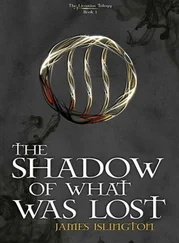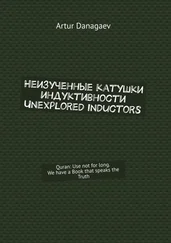Then the cantor calls out again, “The distinguished young man, Raphael, is honored with the honor of the Torah, and with the singing of a beautiful melody.”
Raphael came forward, went to the ark, accepted the scroll from the cantor, and walked at the head of the procession. The elders stood and clapped their hands, adding to the rejoicing. The children stood on the benches chanting aloud “Ye holy lambs” and waving their flags over the heads of the youths. But when Raphael began to sing his melody all hands became still and everyone stood motionless without saying a word. Even the older Hasidim whose saintly way in prayer and in dancing with great fervor is like that of the ancient sage Rabbi Akiba — of whom it is told that when he prayed by himself, his bowing and genuflecting were so fervent that “if when you left him he was in one corner, you found him in another corner at the next moment”—even they restrained themselves with all their might from doing this. They did not lift a hand to clap because of the ecstatic sweetness, even though their hearts were consumed with fire. The women leaned from the windows of the womens’ gallery, and their heads hung out like a flock of doves lined up on the frieze of a wall.
Raphael held the scroll in his arm, walking in the lead with all the other youths following him in the procession around the pulpit. At that moment a young girl pushed her way through the legs of the dancers, leaped toward Raphael, sank her red lips into the white mantle of the Torah scroll in Raphael’s arm, and kept on kissing the scroll and caressing it with her hands. Just then the flag fell out of her hand, and the burning candle dropped on Raphael’s clothing.
After the holiday, Raphael’s father brought an action before the rabbi against the girl’s father in the matter of Raphael’s robe that had been burned because of the girl. The rabbi, indulging himself in the pleasure of a wise remark, said to the girl’s father, “God willing, for their wedding day you will have a new garment made for him.” Immediately they brought a decanter of brandy and wrote the betrothal contract. And for Raphael’s and Miriam’s wedding a new garment was made for him. This is the story of the melody.
And Raphael continues to circle the pulpit, singing sweet melodies. His voice is lovely and sad, numbing the senses but wakening the soul to rise and dance the dance of the Shekhinah. That dance without sound or movement, in which even the earlocks and beard remain motionless, and only the fringes of the prayer shawl drip down to the knees. The house is still, the feet are stilled, and the hands unmoved. The girls come down from the women’s gallery to the house of study to watch the youths dance. The youths continue to circle the pulpit, and the girls reach out with the tips of their fingers toward the Torah scrolls in the hands of the youths.
The sun has set, her last rays shine through the cracks in the shutters, and their light adorns Miriam’s white dress. Raphael came toward Miriam and bowed before her with the Torah scroll held in his arm. He could not see her face because she was wrapped in her wedding dress. Silently Raphael stood and wondered where her wedding dress had come from, because he had taken it out of her wardrobe to have a curtain for the ark made out of it. He walked over to see whether her dress hung there, but when he got there he no longer remembered what he had come for. He stood facing the wardrobe and looked into its black void. Suddenly he noticed the little bag of earth from the Land of Israel. He had placed some of this earth on Miriam’s eyes in her grave. Raphael took the little bag of earth in his hand and his heart trembled violently. His hand faltered and the earth spilled to the floor of the house. His heart became agitated as that of a man who stands on sacred soil.
The lamp flickers. Raphael is wrapped in his prayer shawl, a Torah scroll in his arm, and the scroll has a mantle of fine silk on which the name of Miriam the wife of Raphael the Scribe is embroidered. The house becomes filled with many Torah scrolls, and many elders dancing. As they dance they neither lift their feet nor bend their knees, but move as if they had no joints. They dance without motion, revolving their bodies, and Miriam stands in the center, her face covered, dancing with her shoulders, her arms raised into the emptiness of the room. She approaches Raphael’s scroll. She takes off her veil and covers her face with her hands. Suddenly her hands slide down, her face is uncovered, and her lips cling to the mantle of the Torah scroll in Raphael’s arms.
The Holy One, blessed be He, removed His robe of light, and the world stood in silent evening prayer. The lamp flickered and the wick sank into the oil. Suddenly a tongue of flame leaped up and illuminated the room. Its light framed the face of Raphael the Scribe, who sank down with his scroll. His wife’s wedding dress was spread out over him and over his scroll.
You heard the story from whomever you may have heard it, whereas I heard it from a Hasid son of a Hasid who heard it from his teacher Reb Shlomo the Tzaddik of Zvihel, the direct seventh generation descendant of Reb Mikheleh the Holy Preacher of Zloczow. And there is no question that the way I heard it from that Hasid who heard it from his Rebbe, is exactly the way it happened, since that righteous Reb Shlomo of Zvihel had it from his fathers and in the very language of his fathers he told it, not adding a word except for clarification. So whatever he added was of the very stuff of the original.
Reb Mikheleh the Holy Preacher of Zloczow started out a pauper in a house devoid of material goods. Often he had nothing except the slice he had stashed away in the hat on his head for a beggar, so that in case a beggar should happen along he would not leave humiliated, for so devoted was that righteous man to his Maker that he neglected his own needs, paying attention only to the needs of the Shekhinah — that is Torah, prayer, and good deeds.
Doesn’t Solomon tell us in his Proverbs that the righteous man understands the soul of his beast? Well, so, too, the wife of that righteous man understood the soul of her righteous husband. She did all she could to keep aggravation away from him and to protect him against all distractions from his holy work, unlike most women who, when the cupboard is bare, come muttering and nattering.
One year it was already hours before Sukkot and the rabbi’s wife did not have a morsel in the house for celebrating the holiday. She thought, I will go tell my husband — he will hear and know my distress. She went to his solitude room, stood in the doorway, and said, “Sukkot eve is upon us and I still have no festival provisions.”
That righteous man lifted himself from his chair, poked his head out from under his tallit, put his hand on his tefillin, and said to her, “You are worried about meat and fish, and I am worried about not yet having my etrog.”
She kissed the mezuzah on the doorpost of his room and left dejectedly.
That righteous man stood up and went all over the house looking for something to sell and use the money to buy an etrog. He looked and looked but did not find a single thing worth an etrog.
He fondled his tefillin and mused, The nine festival days are approaching, and during the festival tefillin aren’t worn, and my tefillin were written by a holy man of God, who writes each and every letter in holiness and purity, investing the most sublime and most awesome intents and purposes in the writing of each and every character. Tefillin of his make are much sought after and command a high price. I will sell them, and with the proceeds I will get an etrog.
Reb Mikheleh removed his tefillin and took them and went to his Beit Midrash and asked, “Who would like to buy my tefillin?” A certain man stood up and said, “I will buy them.” He took out a gold dinar and gave it to the righteous man, and the righteous man handed him his tefillin.
Читать дальше











